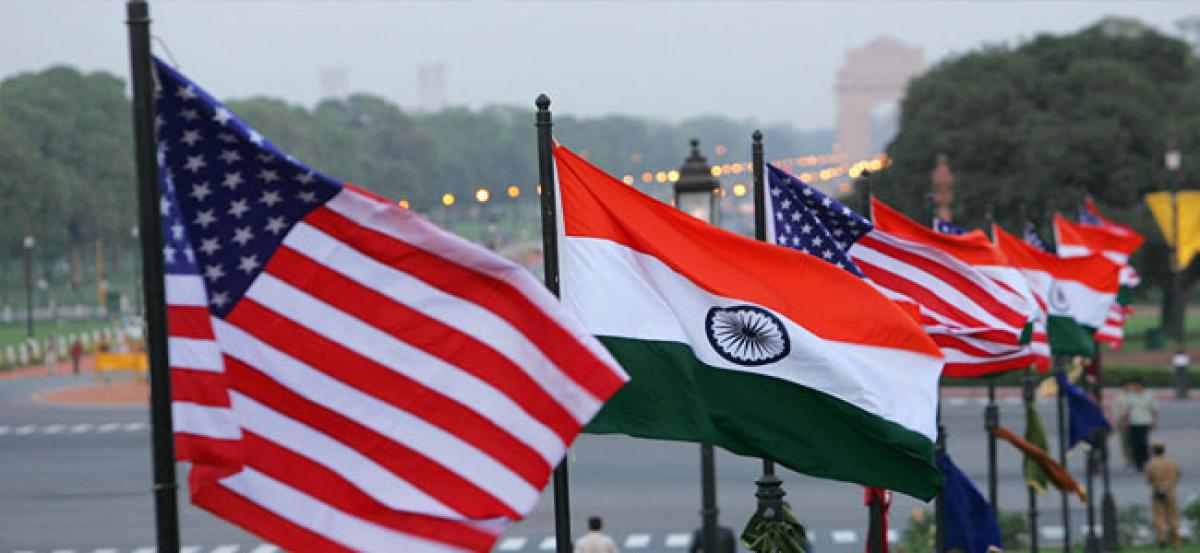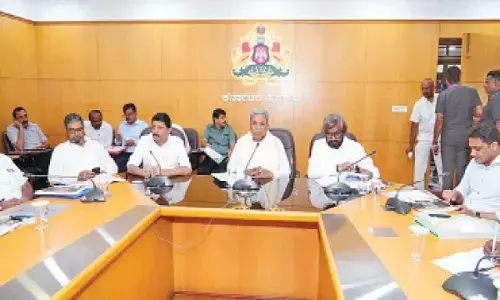India to stay away from US until Trump's evangelism ends

The warning signs were manifest when Prime Minister Narendra Modi abandoned a muscular approach towards China in the aftermath of the 2017 Doklam standoff, and towards India’s immediate neighbourhood — as evident in the warm outreach to Communist-controlled Nepal following the 2015 blockade. India’s relations with the United States are under renewed focus to assess whether the momentum of the past
The warning signs were manifest when Prime Minister Narendra Modi abandoned a muscular approach towards China in the aftermath of the 2017 Doklam standoff, and towards India’s immediate neighbourhood — as evident in the warm outreach to Communist-controlled Nepal following the 2015 blockade. India’s relations with the United States are under renewed focus to assess whether the momentum of the past two decades is waning.
Each must rectify behaviour or face tariffs regardless of whether it is a European ally like Germany, a treaty-bound neighbour like Canada or a new partner like India. Mr Trump has upended stability in the Gulf region and West Asia by aligning with the young leadership of the UAE and Saudi Arabia against not only Shia nations led by Iran but even Qatar, Yemen and perhaps Turkey. Simultaneously, his North Korean gambit has left Japan and the US alliances in the Pacific open to doubt. But domestically, the old script of a muscular approach to Pakistan stays, being a trusted electoral instrument when economic and development promises earlier made appear haphazardly delivered.
Thus, Mr Modi visited Wuhan in April for an “informal summit” with Chinese President Xi Jinping. On June 9-10, he was back in Qingdao, China, for the Shanghai Cooperation summit. The Qingdao Declaration on June 11 came as President Trump met North Korea’s supremo Kim Jong-un in Singapore. Three points were US-specific — avoiding disruption of world trade and protectionism; sustainable implementation of the Iran nuclear deal; and cooperation in innovation. Only time will tell whether the Chinese read this as a face-saver for both or kowtowing by India, on rebound from exuberant American dalliance.
With oil prices rebounding, Russian allies Iran and Syria regaining control over a large swathe of West Asia, routing ISIS, and Europe divided over immigration, President Vladimir Putin has resurrected Russian influence. Russia was also converging with China to create a bulwark against US activism.
Sending Nikki Haley, US ambassador to the UN and a Cabinet member, to New Delhi was poor substitute for institutional engagement. Moreover, she was the point person for announcing the US withdrawal from the Iran nuclear deal and the face of US multilateralism, or its Trumpian version, symbolised by her announcement of the US quitting the UN Human Rights Council. Her message was to have India abandon oil purchases from Iran and dalliance with Russia as US legislation forbids trading, including arms purchases, even from the latter.
India could, as seems to be happening, apparently accept the US demarche and reel back its outreach to Iran and Russia. Iran is vital for more than oil and gas. It is a bridge to Afghanistan and Central Asia. India also has world’s second largest Shia population, whose votes the BJP now covets in Uttar Pradesh. Mr Trump may run into domestic or international trouble. Reports leaked by US intelligence indicate that North Korea is still enriching weapons-grade uranium at secret facilities, in breach of the Trump-Kim understanding.
On July 6, a 25 per cent tariff on $50 billion of Chinese goods are to kick in. The US has another list of 10 per cent duty on a further $200 billion goods. China has complained to the WTO but the US argues that China stole US intellectual property first. In 2017, the US imported $505 billion of Chinese goods. Many products imported have US components and may impact US manufacturers indirectly. Whether China relents and opens its markets and becomes less predatory is also a factor of domestic Chinese politics. President Xi Jinping must protect his image as a strong leader.
The US perceives “Made in China 2025” as a technology behemoth built on purloined US and Western technology. “America First” is seen by China, if not Europe and Asia, as bullying by a mercantilist who sees global trade as a zero-sum game.








